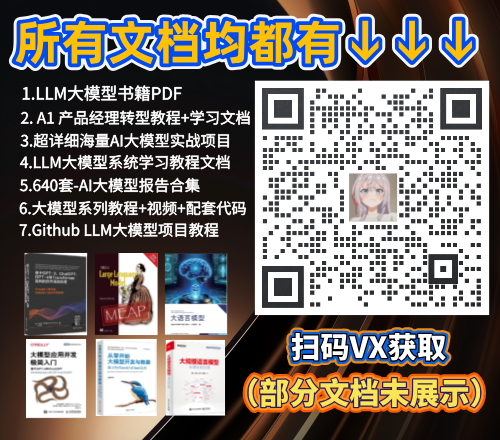GraphRAG通过结合知识图谱,增加RAG的全局检索能力。今天我将讲解如何使用Neo4J可视化GraphRAG索引的结果,以便进一步的处理、分析,以小说提取的实体《仙逆》为例,一图胜千言。本文分为4小节,安装neo4j、导入GraphRAG索引文件、Neo4J可视化分析和总结,所有坑都已经帮你趟过啦,放心食用。

Neo4j 是由 Neo4j Inc. 开发的图数据库管理系统,是图数据库技术领域的领导者——强大的原生图存储、数据科学和分析,具备企业级的安全性。无约束地扩展您的事务和分析工作负载。已下载超过1.6亿次。Neo4j 存储的数据元素包括节点、连接它们的边以及节点和边的属性。

1. 安装Neo4j
Neo4j支持使用云端服务和本地社区开源版本,使用如下Docker命令启动Neo4J实例。
bash
代码解读
docker run \
-p 7474:7474 -p 7687:7687 \
--name neo4j-apoc \
-e NEO4J_apoc_export_file_enabled=true \
-e NEO4J_apoc_import_file_enabled=true \
-e NEO4J_apoc_import_file_use__neo4j__config=true \
-e NEO4J_PLUGINS=["apoc"] \
neo4j:5.21.2
浏览器打开http://localhost:7474,然后输入默认用户名neo4j,默认密码neo4j即可登录,登录之后要求重设密码。
接下来,安装neo4j的依赖包
bash
代码解读
pip install --quiet pandas neo4j-rust-ext
2. 导入GraphRAG的索引结果
为了更好的支持中文提取,本次采用deepseeker的deep-seek-chat模型(为啥不用qwen2?因为我的免费额度使用完了)。注册之后免费500万Token,索引一次通过,支持128K上下文,最大输出Tokens为4096。所以设置LLM的时候,务必把max_tokens设置为4096,未明确说明TPM和RPM,根据平台符合自动调整。
- 导入依赖库
python
代码解读
import pandas as pd
from neo4j import GraphDatabase
import time
- 联结本地Neo4j实例
python
代码解读
NEO4J_URI = "neo4j://localhost" # or neo4j+s://xxxx.databases.neo4j.io
NEO4J_USERNAME = "neo4j"
NEO4J_PASSWORD = "password" #你自己的密码
NEO4J_DATABASE = "neo4j"
# Create a Neo4j driver
driver = GraphDatabase.driver(NEO4J_URI, auth=(NEO4J_USERNAME, NEO4J_PASSWORD))
- 配置本次索引目录
python
代码解读
GRAPHRAG_FOLDER = "./output/20240716-192226/artifacts"
- 创建Neo4j索引
在Neo4j中,索引仅用于查找图查询的起始点,例如快速查找两个节点以进行连接。约束用于避免重复,主要在实体类型的id上创建。我们使用带有两个下划线的类型作为标记,以区分它们与实际的实体类型。
python
代码解读
statements = """
create constraint chunk_id if not exists for (c:__Chunk__) require c.id is unique;
create constraint document_id if not exists for (d:__Document__) require d.id is unique;
create constraint entity_id if not exists for (c:__Community__) require c.community is unique;
create constraint entity_id if not exists for (e:__Entity__) require e.id is unique;
create constraint entity_title if not exists for (e:__Entity__) require e.name is unique;
create constraint entity_title if not exists for (e:__Covariate__) require e.title is unique;
create constraint related_id if not exists for ()-[rel:RELATED]->() require rel.id is unique;
""".split(";")
for statement in statements:
if len((statement or "").strip()) > 0:
print(statement)
driver.execute_query(statement)
- 创建批量导入函数
python
代码解读
def batched_import(statement, df, batch_size=1000):
"""
Import a dataframe into Neo4j using a batched approach.
Parameters: statement is the Cypher query to execute, df is the dataframe to import, and batch_size is the number of rows to import in each batch.
"""
total = len(df)
start_s = time.time()
for start in range(0,total, batch_size):
batch = df.iloc[start: min(start+batch_size,total)]
result = driver.execute_query("UNWIND $rows AS value " + statement,
rows=batch.to_dict('records'),
database_=NEO4J_DATABASE)
print(result.summary.counters)
print(f'{total} rows in { time.time() - start_s} s.')
return total
- 导入文档
python
代码解读
doc_df = pd.read_parquet(f'{GRAPHRAG_FOLDER}/create_final_documents.parquet', columns=["id", "title"])
doc_df.head(2)
# import documents
statement = """
MERGE (d:__Document__ {id:value.id})
SET d += value {.title}
"""
batched_import(statement, doc_df)
- 导入text units
python
代码解读
text_df = pd.read_parquet(f'{GRAPHRAG_FOLDER}/create_final_text_units.parquet',
columns=["id","text","n_tokens","document_ids"])
text_df.head(2)
statement = """
MERGE (c:__Chunk__ {id:value.id})
SET c += value {.text, .n_tokens}
WITH c, value
UNWIND value.document_ids AS document
MATCH (d:__Document__ {id:document})
MERGE (c)-[:PART_OF]->(d)
"""
batched_import(statement, text_df)
- 加载实体
python
代码解读
entity_df = pd.read_parquet(f'{GRAPHRAG_FOLDER}/create_final_entities.parquet',
columns=["name", "type", "description", "human_readable_id", "id", "description_embedding",
"text_unit_ids"])
entity_df.head(2)
entity_statement = """
MERGE (e:__Entity__ {id:value.id})
SET e += value {.human_readable_id, .description, name:replace(value.name,'"','')}
WITH e, value
CALL db.create.setNodeVectorProperty(e, "description_embedding", value.description_embedding)
CALL apoc.create.addLabels(e, case when coalesce(value.type,"") = "" then [] else [apoc.text.upperCamelCase(replace(value.type,'"',''))] end) yield node
UNWIND value.text_unit_ids AS text_unit
MATCH (c:__Chunk__ {id:text_unit})
MERGE (c)-[:HAS_ENTITY]->(e)
"""
batched_import(entity_statement, entity_df)
- 导入关系
python
代码解读
rel_df = pd.read_parquet(f'{GRAPHRAG_FOLDER}/create_final_relationships.parquet',
columns=["source", "target", "id", "rank", "weight", "human_readable_id", "description",
"text_unit_ids"])
rel_df.head(2)
rel_statement = """
MATCH (source:__Entity__ {name:replace(value.source,'"','')})
MATCH (target:__Entity__ {name:replace(value.target,'"','')})
// not necessary to merge on id as there is only one relationship per pair
MERGE (source)-[rel:RELATED {id: value.id}]->(target)
SET rel += value {.rank, .weight, .human_readable_id, .description, .text_unit_ids}
RETURN count(*) as createdRels
"""
batched_import(rel_statement, rel_df)
- 导入社区
python
代码解读
community_df = pd.read_parquet(f'{GRAPHRAG_FOLDER}/create_final_communities.parquet',
columns=["id", "level", "title", "text_unit_ids", "relationship_ids"])
community_df.head(2)
statement = """
MERGE (c:__Community__ {community:value.id})
SET c += value {.level, .title}
/*
UNWIND value.text_unit_ids as text_unit_id
MATCH (t:__Chunk__ {id:text_unit_id})
MERGE (c)-[:HAS_CHUNK]->(t)
WITH distinct c, value
*/
WITH *
UNWIND value.relationship_ids as rel_id
MATCH (start:__Entity__)-[:RELATED {id:rel_id}]->(end:__Entity__)
MERGE (start)-[:IN_COMMUNITY]->(c)
MERGE (end)-[:IN_COMMUNITY]->(c)
RETURn count(distinct c) as createdCommunities
"""
batched_import(statement, community_df)
- 导入社区报告
python
代码解读
community_report_df = pd.read_parquet(f'{GRAPHRAG_FOLDER}/create_final_community_reports.parquet',
columns=["id", "community", "level", "title", "summary", "findings", "rank",
"rank_explanation", "full_content"])
community_report_df.head(2)
# import communities
community_statement = """MATCH (c:__Community__ {community: value.community})
SET c += value {.level, .title, .rank, .rank_explanation, .full_content, .summary}
WITH c, value
UNWIND range(0, size(value.findings)-1) AS finding_idx
WITH c, value, finding_idx, value.findings[finding_idx] as finding
MERGE (c)-[:HAS_FINDING]->(f:Finding {id: finding_idx})
SET f += finding"""
batched_import(community_statement, community_report_df)
以上我们导入了文档、TextUnits、实体、关系、社区和社区报告后,打开浏览器后就可可视化分析这些实体关系和社区之间的信息了。Here we go~
3. 可视化分析
打开浏览器输入地址http://localhost:7474/browser/。
- 实体
每个实体可点开,查看进一步的关联关系,王林和铁柱的关系也是一目了然。

- 社区
社区有很多,基本上是对某一个特定事件进行整合,比如测试事件都关联了哪些人、那些测试。

- 地点

点开洞穴可以进一步查看该洞穴关联的实体和人物、文本单元。

如何系统的去学习大模型LLM ?
大模型时代,火爆出圈的LLM大模型让程序员们开始重新评估自己的本领。 “AI会取代那些行业?”“谁的饭碗又将不保了?”等问题热议不断。
事实上,抢你饭碗的不是AI,而是会利用AI的人。
继科大讯飞、阿里、华为等巨头公司发布AI产品后,很多中小企业也陆续进场!超高年薪,挖掘AI大模型人才! 如今大厂老板们,也更倾向于会AI的人,普通程序员,还有应对的机会吗?
与其焦虑……
不如成为「掌握AI工具的技术人」,毕竟AI时代,谁先尝试,谁就能占得先机!
但是LLM相关的内容很多,现在网上的老课程老教材关于LLM又太少。所以现在小白入门就只能靠自学,学习成本和门槛很高。
针对所有自学遇到困难的同学们,我帮大家系统梳理大模型学习脉络,将这份 LLM大模型资料 分享出来:包括LLM大模型书籍、640套大模型行业报告、LLM大模型学习视频、LLM大模型学习路线、开源大模型学习教程等, 😝有需要的小伙伴,可以 扫描下方二维码领取🆓↓↓↓

一、LLM大模型经典书籍
AI大模型已经成为了当今科技领域的一大热点,那以下这些大模型书籍就是非常不错的学习资源。

二、640套LLM大模型报告合集
这套包含640份报告的合集,涵盖了大模型的理论研究、技术实现、行业应用等多个方面。无论您是科研人员、工程师,还是对AI大模型感兴趣的爱好者,这套报告合集都将为您提供宝贵的信息和启示。(几乎涵盖所有行业)

三、LLM大模型系列视频教程

四、LLM大模型开源教程(LLaLA/Meta/chatglm/chatgpt)

LLM大模型学习路线 ↓
阶段1:AI大模型时代的基础理解
-
目标:了解AI大模型的基本概念、发展历程和核心原理。
-
内容:
- L1.1 人工智能简述与大模型起源
- L1.2 大模型与通用人工智能
- L1.3 GPT模型的发展历程
- L1.4 模型工程
- L1.4.1 知识大模型
- L1.4.2 生产大模型
- L1.4.3 模型工程方法论
- L1.4.4 模型工程实践
- L1.5 GPT应用案例
阶段2:AI大模型API应用开发工程
-
目标:掌握AI大模型API的使用和开发,以及相关的编程技能。
-
内容:
- L2.1 API接口
- L2.1.1 OpenAI API接口
- L2.1.2 Python接口接入
- L2.1.3 BOT工具类框架
- L2.1.4 代码示例
- L2.2 Prompt框架
- L2.3 流水线工程
- L2.4 总结与展望
阶段3:AI大模型应用架构实践
-
目标:深入理解AI大模型的应用架构,并能够进行私有化部署。
-
内容:
- L3.1 Agent模型框架
- L3.2 MetaGPT
- L3.3 ChatGLM
- L3.4 LLAMA
- L3.5 其他大模型介绍
阶段4:AI大模型私有化部署
-
目标:掌握多种AI大模型的私有化部署,包括多模态和特定领域模型。
-
内容:
- L4.1 模型私有化部署概述
- L4.2 模型私有化部署的关键技术
- L4.3 模型私有化部署的实施步骤
- L4.4 模型私有化部署的应用场景
这份 LLM大模型资料 包括LLM大模型书籍、640套大模型行业报告、LLM大模型学习视频、LLM大模型学习路线、开源大模型学习教程等, 😝有需要的小伙伴,可以 扫描下方二维码领取🆓↓↓↓






















 13万+
13万+

 被折叠的 条评论
为什么被折叠?
被折叠的 条评论
为什么被折叠?








